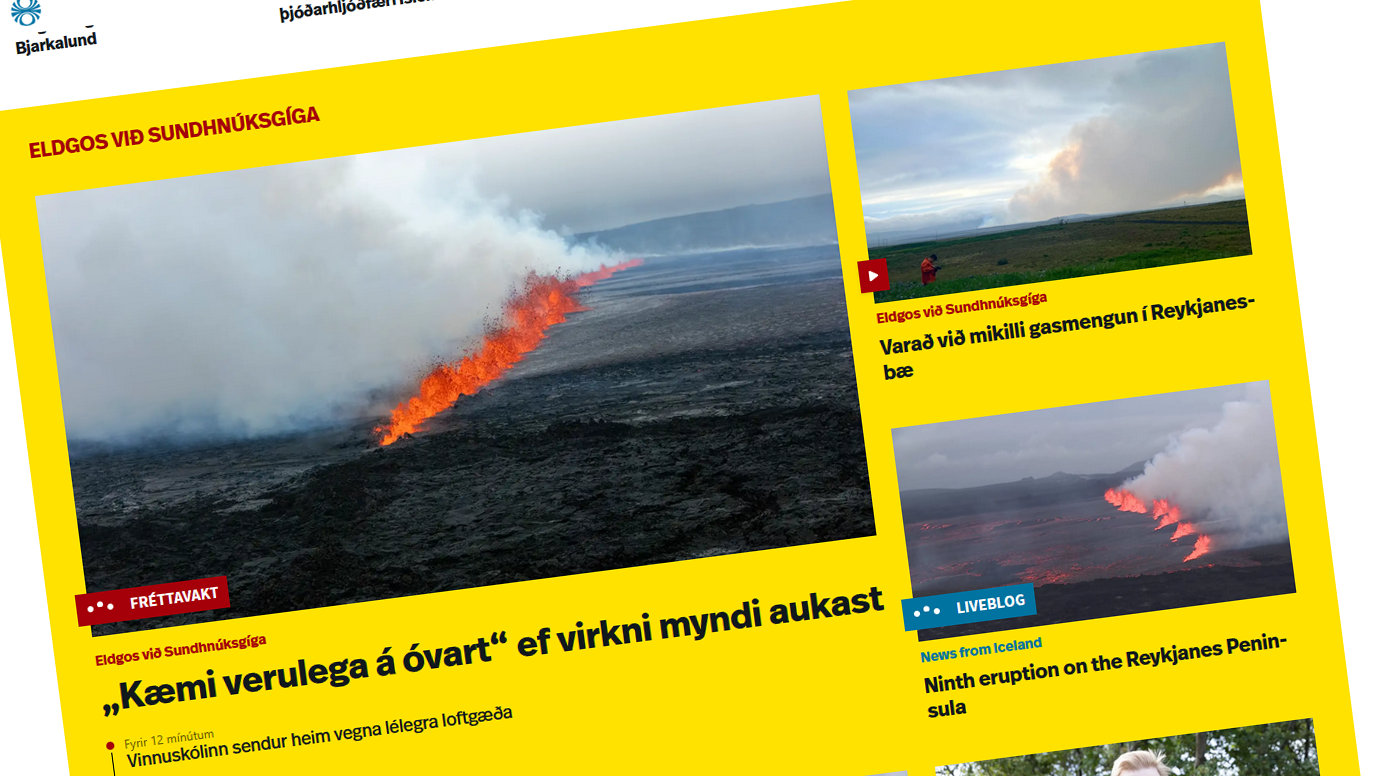UPDATED 21 JULY 2025, last paragraph | After a night of more than 130 earthquakes on the Reykjanesbær (Ryekjanes) peninsula of Iceland with the famous Blue Lagoon, and subsequently a volcanic eruption, Iceland has a new tourist attraction: fresh lava watching from a helicopter. However, the 16 July 2025 outburst in the Sundhnúkur crater seems rather limited.
Later during the day, the state emergency services reported there was no infrastructure under threat. However, in the early morning about 200 guests and staff of the geothermal swimming pool Blue lagoon – situated in the danger zone – were evacuated, as well as the town of Grindavik with currently about 100 inhabitants and two to three dozen camping guests. The town is about 2 to 3 kilometres (1.2 to 1.9 miles) from the eruption site.
Toxic gasses and flight traffic to Keflavik and Reykjavik
Authorities warn of toxic gases over parts of the peninsula as well, and a big plume of smoke has spread northwest all the way to the Western district about 120 (75 miles) away). However, flight traffic to both Keflavik International Airport and Reykjavik Airport (domestic) seemed to continue more or less normally.

Grindavik a ghost town
Grindavik was already largely evacuated after an earlier eruption and earthquakes in 2024 destroyed and damaged roads and houses – after which it became slowly a ghost town. Before the 2024 event, the southwestern town had 3,600 inhabitants, now even brand-new houses and apartment buildings stand empty, also those without any visual damage. One restaurant – with great fish and chips – in the harbour area has reopened since, as well as one fuel pump and a tiny grocery store. The local camping accommodates about 20 to 50 people during the summer nights. Clear evacuation route warnings and many fenced off areas remain in place, as Nordicreporter witnessed just 24 hours before the July 2025 eruption.

The eruption of the Sundhnúkur crater row on Reykjanesbær started around 03:54 local time (GMT-1) after a little more than four hours of earthquakes. Around 12:00 local time the eruption was reported to have caused two lava flows, one from a fissure 2.4 kilometres (7,875 feet) long, and another on a 500-metres (1,640 feet) long stretch. Today’s outbreak is the 9th in the same area, and the 12th of the peninsula since March 2021.
UPDATE 21 JULY 2025: Although Grindavik suffered from toxic gasses days after the eruption, the Blue Lagoon reopened for the weekend already. The eruption continues, causing lesser views from some touristic hotspots and smoggy situations due to ash clouds on several locations in the west of Iceland. | © 2025 Marcel Burger, nordicreporter.com
